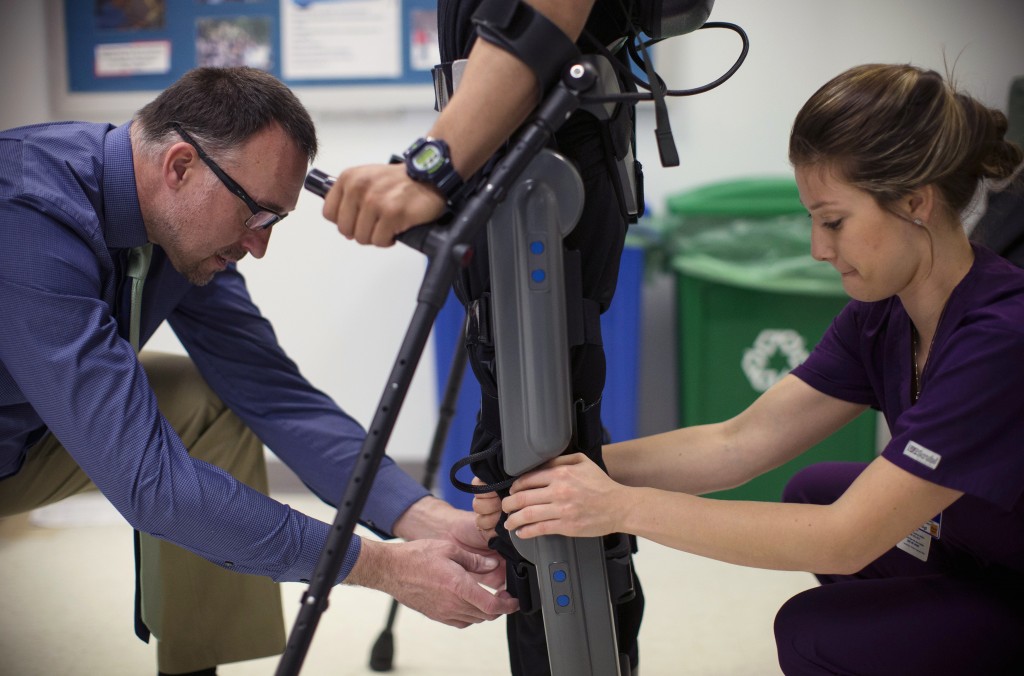Ive always assumed that my son Henry, who has Down syndrome, would never drive a car. Because people with Down syndrome think and react more slowly, they are rarely able to drive, which significantly limits their independence.

But the advent of the self-driving car, which Google has been testing around the San Francisco Bay Area since early 2015, may change all of that. Because the cars have no steering wheel or pedals, they may also benefit people with sensory and mobility impairments that would otherwise prevent them from getting behind the wheel.
Self-driving cars are only the beginning. Last month, Google announced that it will offer up to $20 million in grants to nonprofits that are designing emerging technologies to increase the independence of people with disabilities. Google should be applauded for supporting innovation that will help people with disabilities. But its emphasis on new technology should not detract from the more basic needs of millions of people with disabilities, for whom self-driving cars — not to mention wheelchairs — are a luxury.
New technologies that promise to benefit some can create unexpected disadvantages for others. When the disadvantaged are in the minority, innovators have little incentive to address their concerns. Take, for example, the development of voice technologies like the telephone, radio and film “talkies” in the late nineteenth and early twentieth centuries. The lives of many Americans (including people with disabilities) were improved by these inventions, which provided access to news, entertainment and social connections. However, they increased the isolation of deaf people, who were denied jobs and promotions that required use of a telephone. As the use of audio technologies became widespread, deaf people were cut off from services, culture and social life.
When Helen Kellers interpreter Polly Thomson collapsed from a stroke, Keller was unable to use the telephone to call for help. The telephone remained strictly auditory for almost a hundred years after its invention, until engineer Robert Weitbrecht developed the acoustic coupler, which could translate sound into text, allowing for the emergence of TDD (telecommunications devices for the deaf).
Another unanticipated side effect of audio technologies is that fewer blind people know Braille. Although they can now access nearly any text in audio format, proponents of Braille argue that the current generation of blind students lacks basic literacy — the ability to read, write and take notes — that is expected of well-educated, sighted peers.
Technology exacerbates inequalities between the haves and the have-nots, disproportionately benefiting people who have the financial means to buy costly adaptive devices. In her 2009 TED talk, “My 12 Pairs of Legs,” actor, athlete and activist Aimee Mullins — who has no lower legs — celebrated the fact that she has a prosthetic for every occasion. Yet many people without arms and legs in less developed parts of the world lack the resources to buy even one prosthetic.
The majority of people with disabilities are poor and unemployed. They are more likely to encounter discrimination, to be denied opportunities for education and work, and to become victims of sexual crimes. The existence of self-driving cars or specialized eating utensils does little to help those who lack adequate food, shelter and employment. Twenty million people worldwide require the use of a wheelchair but do not have access to one. Those who do have chairs are excluded from buildings that have no ramps and elevators.
People who have access to innovative technologies may face other challenges. I know from personal experience the long waits and onerous paperwork required to get an assistive device paid for by Medicaid, insurance companies, or the Board of Education. The more technologically-sophisticated the device, the more training and ongoing support it may require. The parent of a child with disabilities once remarked to me that if Google really wants to help the disabled, it should hire a bunch of “administrative advocates” or use its computational skills to design more efficient systems for cutting through bureaucracies of aid.
To be sure, new technology doesnt need to be expensive and rarified. Some of the foundations Google has already committed to supporting are pioneering low-cost, exportable technologies like prosthetics made on a 3D printer and smartphone technology to detect hearing loss. But if the distribution of these devices is uneven, or access requires onerous paperwork, training, and technological support, they may not help the people who need them most.
Dont get me wrong. My sons life has already been enhanced by assistive communication devices that helped to bring in his delayed speech, and the many apps and computer games that have supported his progress with reading and math. But these enhancements pale beside the benefits of regular access to healthcare, clean water and nutritious food, and a school where he is welcomed and included alongside non-disabled children.
Im thrilled by the idea that one day we will argue about who gets to use the family car. But the biggest boost to his quality of life — both for Henry, and people like him — requires no technology whatsoever.




